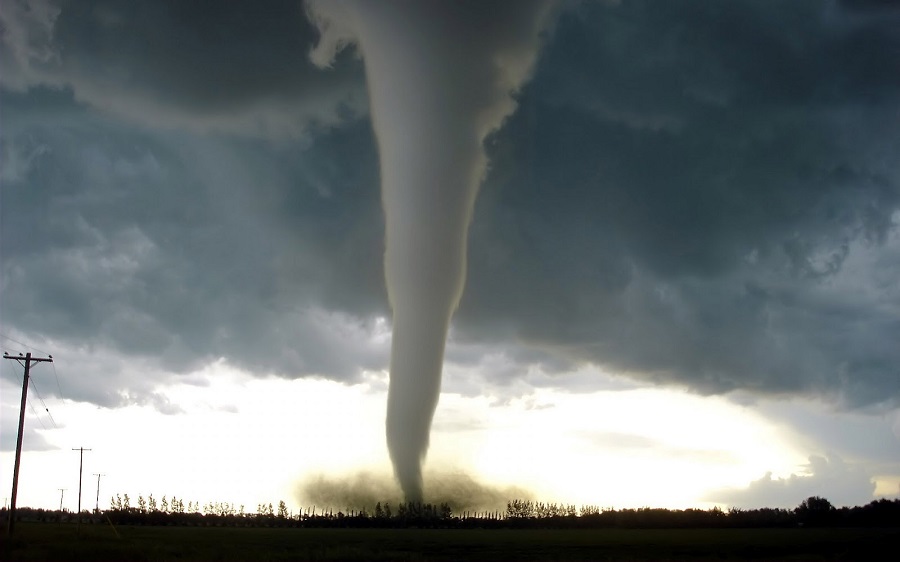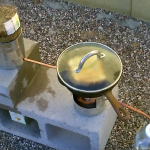Tips on How to Prepare for a Tornado
We all know about the devastating effect that tornadoes can have, and all of us should be at least marginally-prepared in case we get caught in the path of one of these ferocious storms. While many homes and buildings in tornado-prone areas have safe rooms, basements or shelters, tornadoes seem to be striking in areas that are less-prepared. Let’s take a look at some tips that can help all of us weather a tornado and its aftermath, no matter where we are when it strikes.
Bug Out Bags
Everyone should have both a bug out and a bug in bag within arms reach. It should contain at least an extra set of clothing, medications, first aid kit, a couple of days of food rations, water filtration or purification tablets and a flashlight. You should also have a water bottle and a bowl and silverware, along with toiletries. You can add to this list as you see fit, but you should be prepared to have enough items on hand to get you through the first or second day after the disaster.
Keep in mind that the vast majority of people who are in communities that get wiped out by a tornado end up in shelters or homes of friends or family. Consequently, you don’t need to place an emphasis on wilderness or long-term survival gear. Chances are that you will have a place to sleep, perhaps a blanket and some basic essentials where ever you end up. The point is to have a collection of essential items that you would normally take on a short, overnight trip, along with some other basic essentials.
Bug in bags are also important in case you are not able to access your food storage area or get trapped under debris. This will give you access to minimal supplies that you have within reach, and these can end up keeping you alive until you get rescued.
Shelter
Ideally, the best place to be during a tornado is in an underground shelter. However, not all of us have basements or bunkers beneath our homes. If you are in the path of a tornado and can not get out of the way in time, go to an interior room that is in the strongest part of your home. Open windows and doors to equalize air pressure and hopefully minimize the damage that a passing tornado can cause. Unless you suffer from a direct hit, doing this will help to keep air flowing through the structure and often prevent windows, walls and doors from blowing out.
If you live in a mobile home, are stuck in a vehicle or otherwise not in a secure area, find a ditch, drain tunnel or other spot that is lower than the surrounding terrain. Tornadoes do not dig through the ground, rather blast away structures that are above ground. Consequently, your chances of surviving a direct hit and protecting yourself from flying debris is to get below the path of destruction. Another very tried-and-true place to hide is underneath a bridge. Walk up the embankment and crouch between the beams that anchor the bridge to the sides of the road.
Weather Radio
One of the most important things that you can have at your disposal before, during and after a storm is a weather radio. Broadcast towers are often far from ground zero, and you can still receive information if local television, radio and cellular networks go offline. Weather radios also give you up-to-date information about the path of the storm, what areas may be impacted and where people can go to seek shelter. You get all of this information straight from the National Weather Service, and this can reduce delays and misinformation that often happens as it gets relayed through local television and radio stations.
Emergency officials often use weather radios following a tornado to relay information to the public as well. This can include where to go and seek shelter, what roads to take to evacuate and where medical services are staging. All of this information may be difficult to obtain through other means, and it can help to avoid confusion and panic in the aftermath of the storm.
Have a Plan
Finally, take a few minutes and have a plan in place with respect to what to do if you are in an area that receives a tornado warning. There are times when warnings can be issued as far as 30 minutes in advance, and this gives you plenty of time to get to safety. Even if warnings are not that long, having a plan will allow you to switch into survival-mode and have options to fall back on. Be aware of your surroundings, identify places to take shelter and develop a post-disaster communication plan or rendezvous point where you can get reunited with loved ones. Most importantly, communicate these things to your family so everyone knows what to do, where to go and how to get to help in the aftermath of a tornado.
This article is not intended to provide you with a definitive list of options, rather some basic ideas that you can build upon as you plan. Take time to seriously consider how you will react if you are in the path of a tornado, because they can occur almost anywhere and with little warning.














